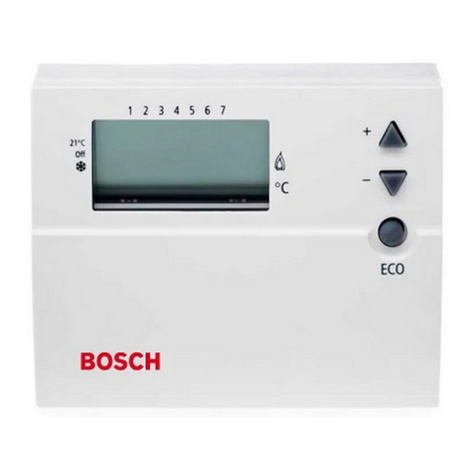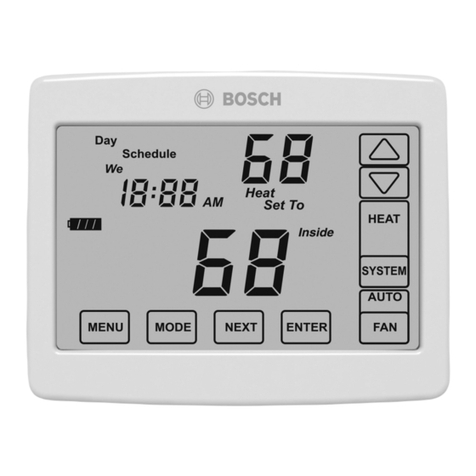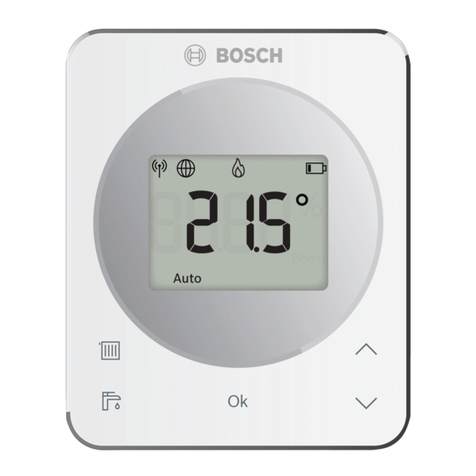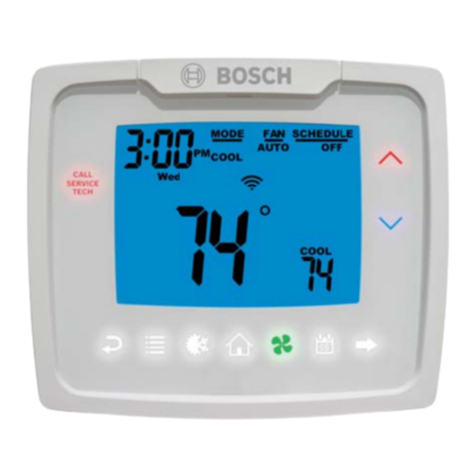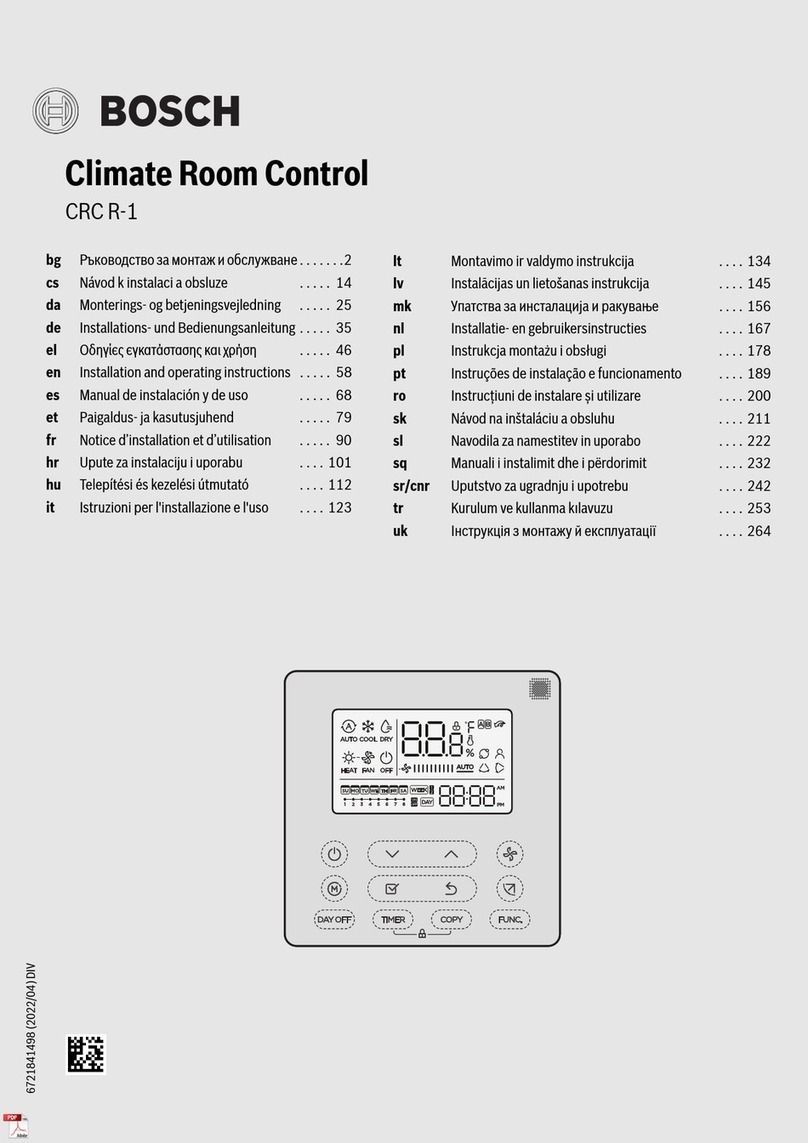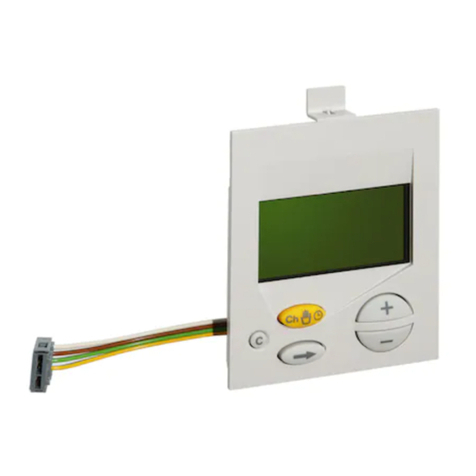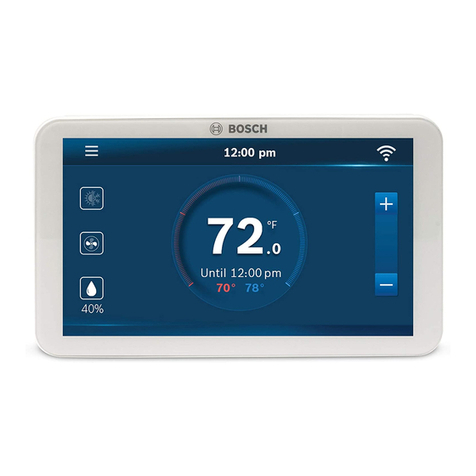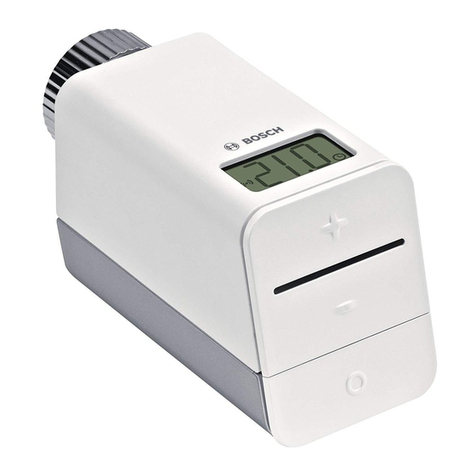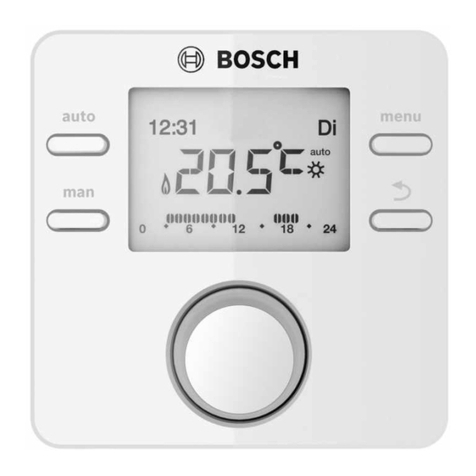
10
TR 200
Deutsch
In der Anzeige (e) erscheint:
Der gewünschte erste Sparbeginn wird durch
Drücken der Tasten „–“ (o) oder „+“ (p) einge-
stellt.
Ein kurzer Druck verstellt den Zeitpunkt für
Sparbeginn um 10 Minuten, bei längerem
Drücken läuft der Zeitpunkt schnell weiter
oder zurück.
Ist die gewünschte Zeit eingestellt, Taste
(q) drücken.
In der Anzeige (e) erscheint:
Hinweis: --:-- bedeutet, daß dieser Schalt-
punkt nicht belegt ist, d. h. bei
Werkseinstellung oder nach länge-
rem Stromausfall ist nur ein Heizbe-
ginn und ein Sparbeginn eingestellt.
Jetzt kann, wenn gewünscht, die Zeit für den
zweiten Heizbeginn nach dem gleichen Sche-
ma wie für den ersten Heizbeginn eingestellt
werden.
Für den zweiten Sparbeginn, sowie wenn ge-
wünscht, für den dritten Heiz- und Sparbeginn
ebenso vorgehen.
Werden Schaltpunkte nicht benötigt, die Ta-
ste (q) drücken, ohne etwas zu verstellen.
Soll ein angezeigter Schaltpunkt gelöscht
werden, die Löschtaste C (r) mit einem Stift
kurz drücken. Es erscheint --:-- in der Anzeige.
Sind die gewünschten Zeiten eingestellt, Ta-
ste (q) drücken.
Es erscheint Tag wählen +/-. Nun wie oben be-
schrieben einen einzelnen/anderen Tag aus-
wählen und die zugehörigen Zeiten eingeben.
Hinweis: Wurde nach der Programmierung
für alle Wochentage, ein einzelner
Wochentag verändert, erscheint
nacherneutem Aufruf von Program-
mierpunkt alle Wochentage bei allen
Schaltpunkten --:-- in der Anzeige.
Wird dann ein Schaltpunkt für alle
Wochentage verändert, wird das ur-
sprüngliche Programm der einzel-
nen Wochentage gelöscht und muß
wie oben beschrieben wieder neu
programmiert werden.
DieSchaltpunkteeinesTagesbrauchen
nicht in der zeitlich richtigen Reihenfolge ein-
gegeben werden. Während der Anzeige
Tag
wählen +/-
ordnet der Regler die Schaltpunkte
selbständig.
Sie können die eingestellten Schaltpunkte an-
sehen, indem Sie wie oben beschrieben vor-
gehen, jedoch ohne „–“ (o) oder „+“ (p) zu
drücken.
Soll über Mitternacht hinaus geheizt wer-
den, so entfällt der letzte Sparbeginn. Diesen
am darauffolgenden Tag als 1. Sparbeginn
eingeben. Der Regler erkennt die Reihenfolge
der Schaltpunkte, obwohl der 1. Heizbeginn
später liegt als der 1. Sparbeginn.
Soll an einem Wochentag grundsätzlich nicht
geheizt werden (z. B. Büro, das Sonntags
nicht benutzt wird), so geben Sie den zugehö-
rigen Sparbeginn (ggf. am Vortag) ein, und lö-
schen alle weiteren Schaltpunkte, bis wieder
geheizt werden soll.
Soll an einem Wochentag grundsätzlich
durchgehend geheizt werden, so geben Sie
den zugehörigen Heizbeginn (ggf. am Vortag)
ein, und löschen alle weiteren Schaltpunkte,
bis wieder gespart werden soll.
Möchten Sie am Programm umfangreiche
Änderungen durchführen, ist es evtl. günsti-
ger, vom werkseitig eingestellten Programm
auszugehen.
Um alle persönlichen Schaltpunkte zu lö-
schen, gehen Sie wie oben beschrieben vor,
bis die Anzeige Tag wählen +/- erscheint. Drük-
ken Sie dann kurz die Löschtaste C (r).
Dann ist wieder die Werkseinstellung (Alle Ta-
ge: 1. Heizbeginn 06:00; 1. Sparbeginn 22:00,
weitere Schaltpunkte--:--) eingestellt.
4217-20.1/G
4217-21.1/G
☞
Tip

